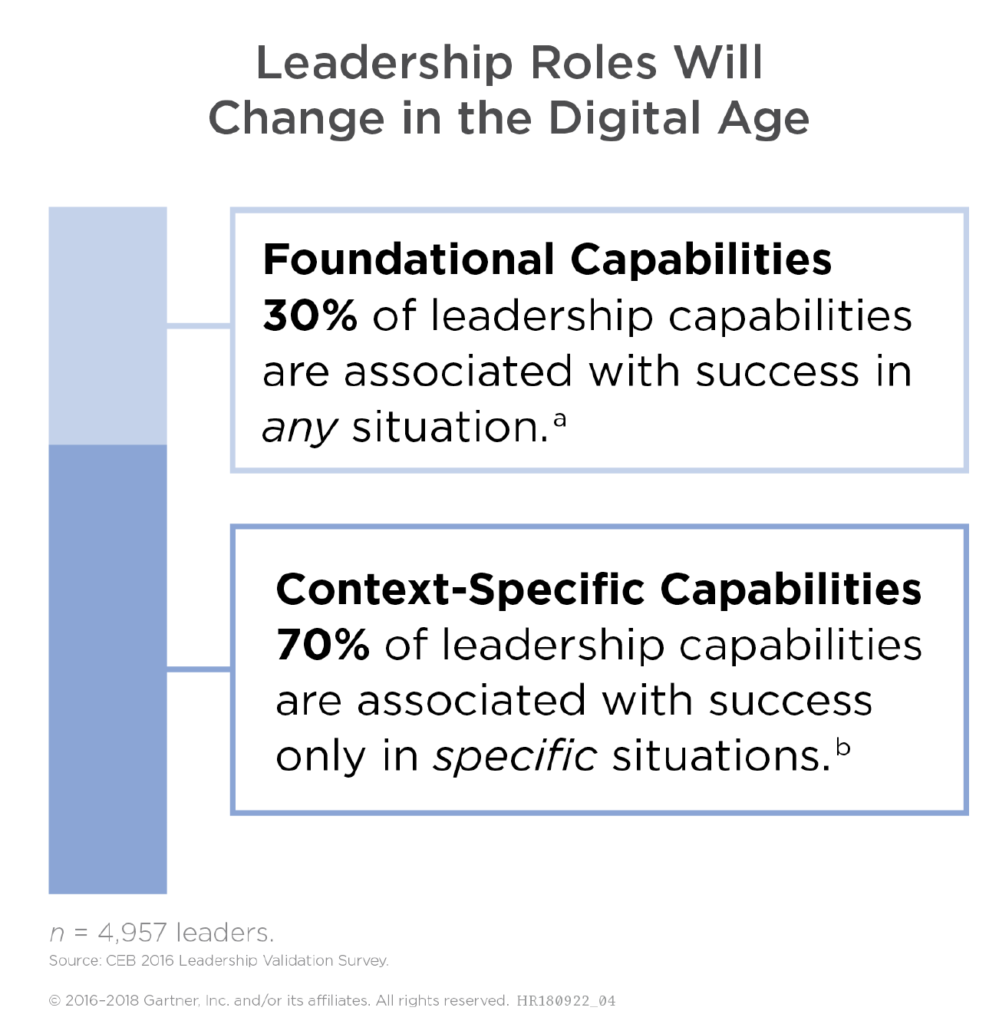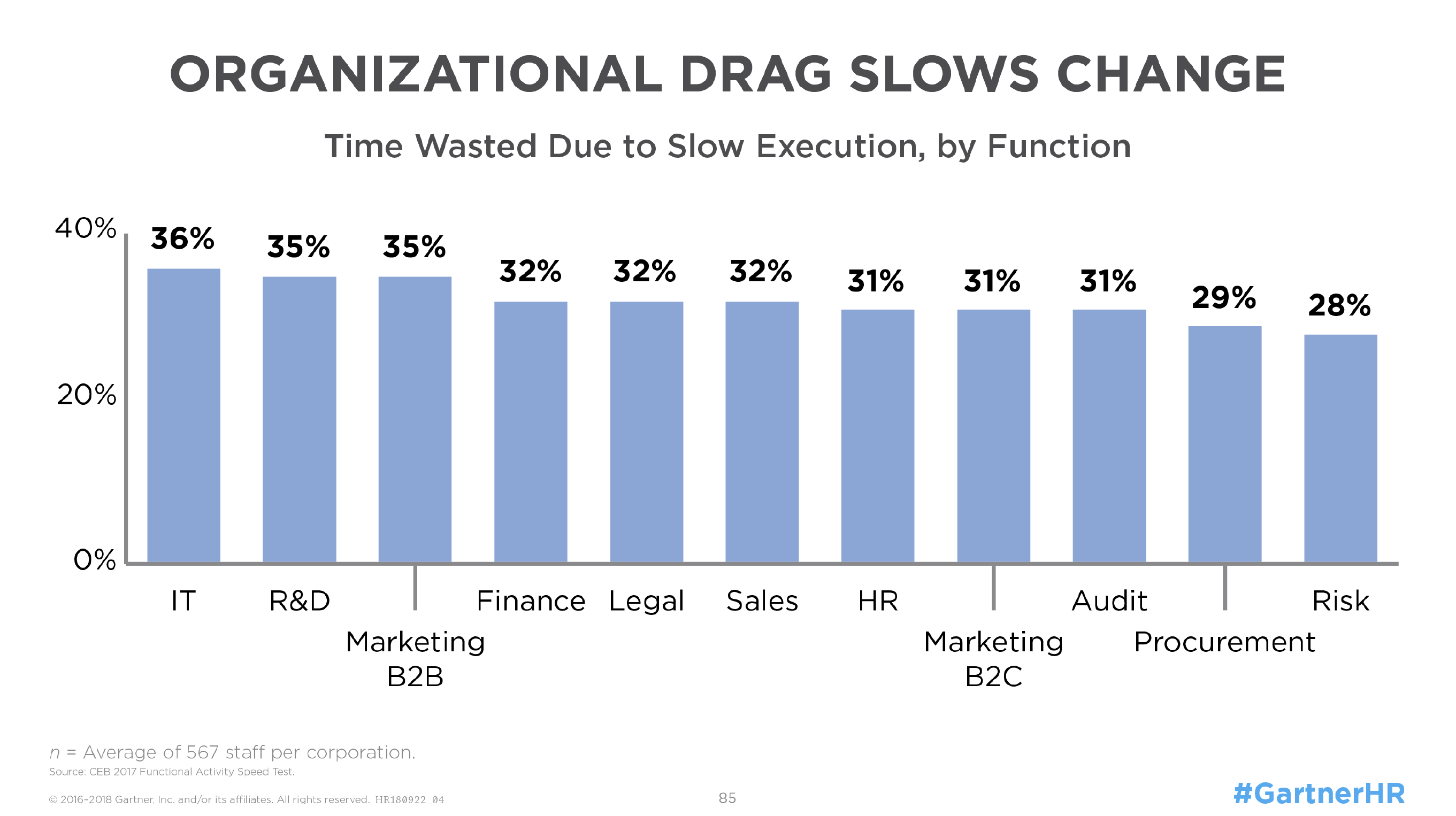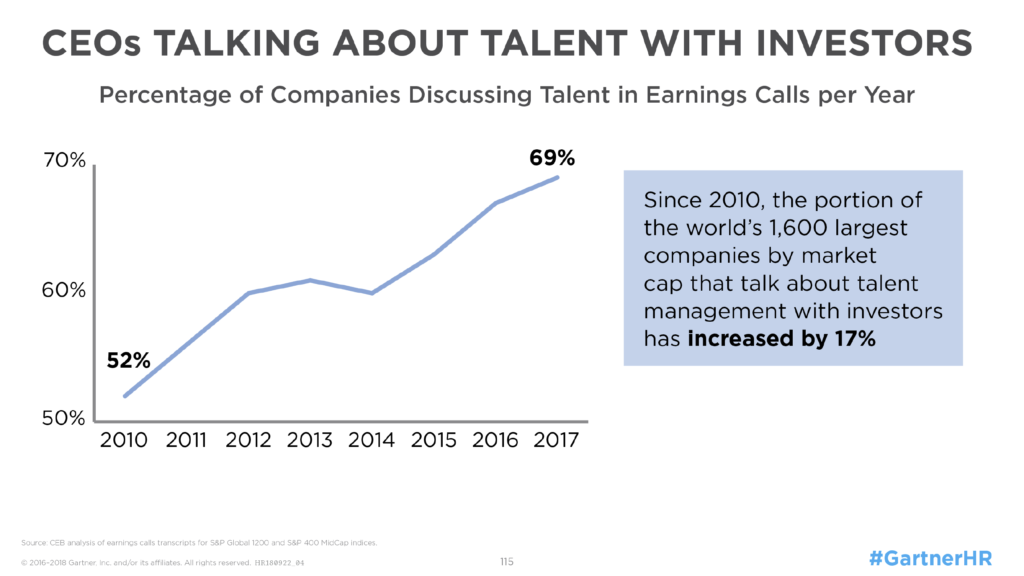HR should be looking to help the CEOs with change management, developing leaders for a digital world, and explaining the value of talent to shareholders.
After the global financial crisis, the story goes, those investors who could admit to their own mistakes looked at how they got so many companies so wrong. Why were they confident in organisations that would ultimately go bankrupt?
One thing they discovered is that they had been focused on finances. They would ask questions like, how much are you spending on research and development and labour costs? But that didn’t help them in the GFC.
Speaking to a packed room at Gartner’s Reimagine HR conference, Brian Kropp, group vice president at Gartner, told the assembled HR professionals that one of the key differences between the companies that survived and those that didn’t was how they managed talent. Investors and shareholders now know this, even if they don’t know what to do about it.
That’s the world we’re living in now. CEOs now want CHROs and HR to help them figure their talent plan, starting with three things.
1. Management through constant change
In a world that’s changing at a rapid pace, the C-suite needs HR to help them guide their talent through that change. One of the pain points is how much time gets wasted as organisations adapt.
Kropp also revealed why most change strategies stall.
- 64 per cent of employees wait to be told by leaders what to do during change
- 71 per cent misdirect their efforts
- 28 per cent intentionally sabotage the change efforts
The problem with all of these is a lack of appropriate leadership. So Kropp offers ideas that can solve each point. To avoid employees waiting for direction you should, as the change effort begins, be more open. Don’t think about who needs to be on board by level of seniority (“Line managers and above will be informed”). Instead of being rigid, decide who should be involved based on who truly cares and is impacted, advises Kropp.
To get in the right frame of mind, he suggests asking questions like the company Red Hat did. These include:
- “Who would be surprised by this change?”
- “Who is knowledgeable about this and may not speak out?”
- “Who is outspoken about this?”
He also said that when measuring change, don’t focus on deployment KPIs (“Employees completed X amount of training courses”). Rather focus on adoption (“Employees displayed new behaviours after X amount of time”).
Finally, to prevent employees from disrupting change efforts, you need to empower them to tell their stories. This means acknowledging that there are winners and losers, and that it’s okay to have fears. Kropp didn’t refer to this as the elephant in the room, he prefers the expression “put that stinky fish on the table”.
Workshops, panel discussions and more intimate discussions should all be considered.
2. Developing leaders for a digital world
Both HR and CEOs realise that new skills will be required in the future. But how do you actually start assessing and building digital talent across an organization?
One of the first things to realise is that the future is specialised. Only 30 per cent of leadership capabilities are applicable to any situation, leaving 70 per cent that only apply in specific circumstances.
Kropp’s advice is to undertake a project of writing job descriptions for what the most important roles will look like in three years. That number is kind of magic. “It’s close enough that people will want to do something about it, but far enough away to have the time to actually make the changes,” he explains.
“The interesting thing is that the descriptions don’t have to be correct,” says Kropp. The benefit from the task doesn’t come from accurate predictions but in getting involvement from stakeholders. Essentially it’s a great conversation starter that will make it easier for HR to start getting buy-in for their strategy.
3. Communicating value of talent to shareholders
Last year Doug Parker, American Airlines’ CEO, was very excited to tell investors about a new plan. After a year in which staff behaviour had resulted in PR blunders that were so bad they reached Australian ears, the company was going to invest in its staff. All their employees would receive raises, to the tune of a billion dollars over the next three years.
The investors rebelled, and the stock plummeted in value. One widely quoted analyst said, “This is frustrating. Labor is being paid first again. Shareholders get leftovers.”
The mistake, says Kropp, is that the strategy wasn’t properly explained. This ties back into the earlier point – investors want to hear that the CEO has a talent plan. Funnily enough, it’s more important that the CEO knows the talent plan than it is that shareholders understand it. What they dread hearing in an investor conference call is a phrase like: “As for talent, let me talk to my CHRO and get back to you.”
For instance, rather than just insisting that paying staff more would improve the business Parker should have explained how exactly his talent initiatives would deliver revenue and profit growth. That way the shareholders might not have seen the move as them losing cash, but rather the organisation making a wise investment resulting in future profits.
Another way to help the CEO in this arena is using HR to enhance brand. For instance, the key difference between US rideshare companies Uber and Lyft is the latter’s insistence on driver happiness. In the US, that has resulted in Lyft steadily taking market share from its bigger rival.
To get started on helping CEOs deal with shareholders, Kropp recommends HR ask them three questions:
- How are we communicating the link between talent and business performance?
- What resources have we dedicated to measuring and analysing the value of our talent?
- How can we use our human resources strategies to enhance our brand?
Become an AHRI member to access the latest HR research and publications from Gartner, AHRI and the Asia Pacific Journal of Human Resources.




It is not surprising taht the sharemarket reacted badly to the news of paying employees well. There has been a very consistent pattern of companies announcing staff cuts, and their share prices subsequently rising, for decades. There is also decades worth of research that proves making wholesale staff cuts leads to a downturn in company profits.
We really can’t start creating our people management stratetgy on the basis of how the share market responds. What we can do though is help the rest of the exec team understand what the research actually proves
Completely agree. It’s also important to link back the needs of individuals to the overall strategic plan. We know that salary increase often provide a short term response, it’s the ongoing connection back to the firm’s strategic vision and plan that provides a purpose that can offer a greater ROI. Looking at the business operating models of the future is imperative and takes time and innovation to think differently. The HR profession can help influence here and push a different approach to increase engagement and productivity. All the best!
Don’t the shareholders know that if you pay peanuts you get monkeys. But then it depends.
We have leaders who only hire those who can “ape” them.
I used to ask Executive members who their key people were and what they were doing to develop and retain them. I received blank stares.
Interesting point above on sabotage. I found the key saboteurs were in senior management who were very keen to maintain the status quo.
The bottle neck is usually found at the top of the bottle.
Very enlightening. Thank you for your post.